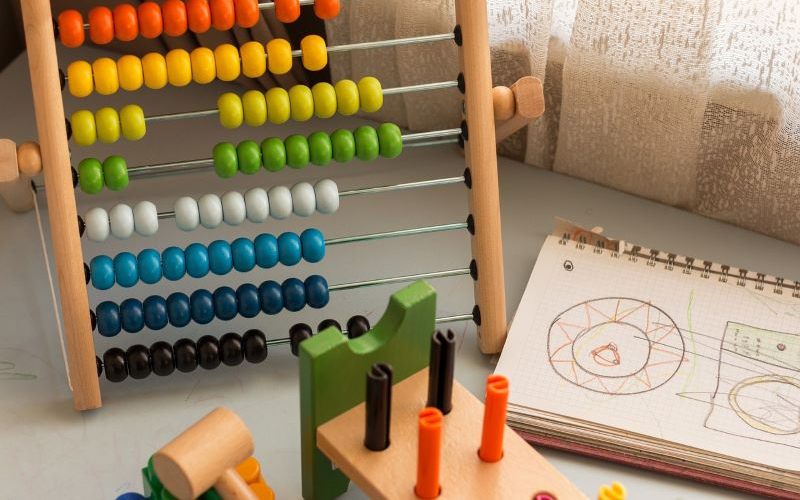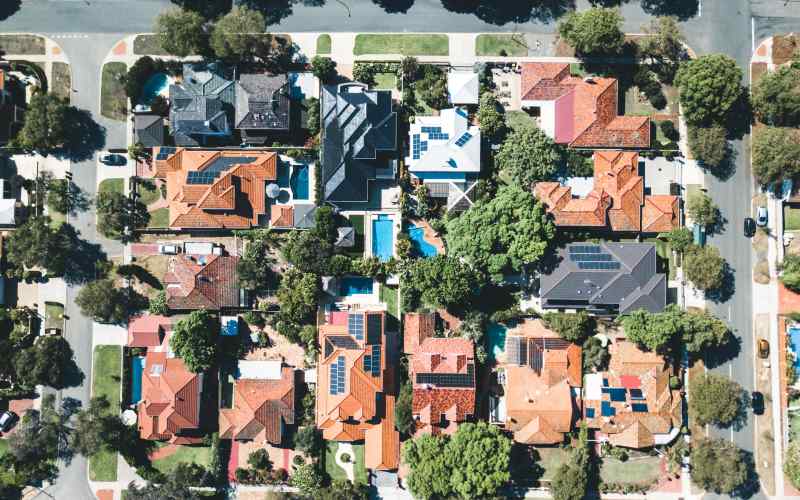Saving 20% for a deposit might seem nearly impossible for first home buyers these days. In recent years, the government has launched several first home buyer initiatives to address this common pain point. The New Home Guarantee (NHG) is one such initiative.
According to government analysis, the NHG has helped participants purchase their homes an average of four and a half years earlier. This is because buyers under this scheme can purchase their brand new homes with as little as a 5% deposit, without needing to pay lenders mortgage insurance (LMI). This can break down the hurdle many first home buyers face.
It sounds like it’s all sunshine and roses, but is the NHG all it’s cracked up to be?
Advertisement
Buying a home or looking to refinance? The table below features home loans with some of the lowest interest rates on the market for owner occupiers.
| Lender | Home Loan | Interest Rate | Comparison Rate* | Monthly Repayment | Repayment type | Rate Type | Offset | Redraw | Ongoing Fees | Upfront Fees | Max LVR | Lump Sum Repayment | Additional Repayments | Split Loan Option | Tags | Row Tags | Features | Link | Compare | Promoted Product | Disclosure |
|---|---|---|---|---|---|---|---|---|---|---|---|---|---|---|---|---|---|---|---|---|---|
5.79% p.a. | 5.83% p.a. | $2,931 | Principal & Interest | Variable | $0 | $530 | 90% |
| Promoted | Disclosure | |||||||||||
5.74% p.a. | 5.65% p.a. | $2,915 | Principal & Interest | Variable | $0 | $0 | 80% |
| Promoted | Disclosure | |||||||||||
5.84% p.a. | 6.08% p.a. | $2,947 | Principal & Interest | Variable | $250 | $250 | 60% |
| Promoted | Disclosure |
What is the New Home Guarantee & how does it work?
The New Home Guarantee (NHG) was launched by the Australian Government to help buyers own their first home sooner. Under this scheme, first home buyers with a deposit of less than 20% will have the remaining portion of the 20% ‘guaranteed’ by the National Housing Finance and Investment Corporation (NHFIC), meaning that with as little as a 5% deposit, they won’t be required to pay LMI.
Unlike the popular First Home Loan Deposit Scheme, recipients under the NHG must purchase a brand new home. Eligible properties for the NHG include newly-constructed dwellings; off-the-plan dwellings; house and land packages; and land and a separate contract to build. However, these properties must be priced within strict price caps (detailed further below), which differ between various locations.
Shane Geha, Founding Director of EG Group, calls it an “excellent idea”, as high house prices present a barrier to entering the housing market, particularly for young people.
“This initiative does not cost the Government anything, as they are not outlaying cash…it’s simply a guarantee,” Dr Geha told Savings.com.au.
“Provided the risk is reasonable or better and the young borrowers have reasonable employment prospects or better, it can work very well, in terms of getting more young people into the market.”
Pros and Cons of the New Home Guarantee
Would buying a brand new home as a first home buyer be possible without the NHG there to back you up? It would definitely be possible, but it would probably be a lot more difficult.
As with everything in life, jumping on the NHG will come with pros and cons that should be weighed up. Let’s discuss a few of them to help guide you in your decision of whether to apply for the NHG.
Pro: Own your first home sooner
As mentioned, recipients under the NHG were able to purchase their first homes, on average, four and a half years earlier. Diaswati Mardiasmo, PRD Chief Economist, said it can be the push first home buyers need to take the leap into home ownership.
“In this current historic low interest rate landscape, securing a low fixed rate mortgage home loan is advantageous, as that means the lowest monthly repayment possible for the next up to 3 years,” Dr Mardiasmo told Savings.com.au.
“Knowing this means that the first home buyer can plan a household budget where the mortgage payment proportion is low, allowing them to be able to service other parts of their life.”
Dr Mardiasmo also said more renters transitioning to home ownership will help put more rental properties on the market, which is needed due to low rental stock.
Con: Availability of stock
According to Dr Mardiasmo, one of the main drawbacks is the availability of stock under the price cap (which we will discuss later).
“For Queensland capital city and regional centres for example, the price cap is $650K. Yet the Brisbane median house price (as well as Gold Coast and Sunshine Coast) is well above this,” Dr Mardiasmo told Savings.com.au.
“Therefore finding new stock under this price cap can be a challenge, and first home buyers must either sacrifice on area or type of stock. For example moving out even further from the CBD or swapping from a bigger to smaller apartment.”
While she used Queensland as an example, Ms Mardiasmo said the same can be said for other capital cities, especially in the current market conditions.
Pro: Say bye to LMI
One of the main benefits of the NHG, and probably its main selling point, is that you won’t need to pay LMI. Typically, lenders will charge what’s called lenders mortgage insurance (LMI) for deposits less than 20% because there’s a higher chance of the loan amount exceeding the value of the home (negative equity). This poses a big risk to the lender, because it means it might fail to recover what’s owed to it if the borrower defaults on the mortgage. LMI is solely for the lender’s protection from such a scenario, so it doesn’t benefit the borrower. Yet the borrower has to pay for this insurance, which often costs tens of thousands of dollars.
Since NHG participants have the backing of the federal government, lenders feel protected enough to not need LMI, saving the borrower thousands. That’s more money which can instead be put towards paying down the mortgage.
Con: Bigger debt = bigger repayments
Putting down a 5% deposit means taking on a 95% home loan. This means that recipients are immediately taking on a bigger debt than they would putting down a larger deposit, which can mean needing to make larger repayments.
National Lending Manager at WLTH Chad Hoy Poy said it’s important to acknowledge the associated risks of buying with a low deposit.
“Generally speaking, the bigger the loan, the higher your ongoing repayments will be,” he told Savings.com.au.
To clearly illustrate this, we can look at two examples of purchasing a $400,000 property using Savings.com.au’s mortgage calculator.
If a person wanted to buy a $400,000 property with a 20% deposit, they’d need to put down $80,000. Meaning, they would take out a $320,000 home loan to cover the difference. Assuming they pay monthly with a 2.3% interest rate, the repayment amounts on a 30-year loan would be $1,231 per month.
Purchasing the same property with a 5% deposit would mean putting down $20,000, and being left to take out a $380,000 mortgage. Again, assuming the same conditions apply as above, the repayment amounts would be $1,462 per month.
Additionally, since you’re servicing a bigger debt, you’ll likely end up paying more in interest. This is because you have a bigger principal amount, and therefore, more interest will be charged. This can add up to thousands of dollars over the life of your loan.
Pro: Can still apply for other government assistance
Under the New Home Guarantee, you can still apply for other government programs to support you in owning your first home. For example, the First Home Super Saver Scheme (FHSSS), and the First Home Owner Grants are all still available for you to apply for. While these other programs have their own criteria and conditions, this could mean accessing even further support in owning your first home.
“These schemes can build buyers confidence, allowing potential buyers to get into the property market sooner and the belief that owning a home is a dream that can become a reality,” Mr Hoy Poy said.
Con: Limited spots available
From 1 July 2021 to 30 June 2022, there are only 10,000 spots available to participate in the NHG. This means that spots are limited, and you might not even qualify for the scheme.
What are the price caps in my state or territory?
As mentioned, finding a property under the price threshold is a prerequisite to be able to utilise the scheme, but can prove challenging. However, it’s something you’ll need to do in order to access the guarantee.
The price caps under the NHG are still the same as they were when the scheme was first launched. The current property price caps are displayed in the table below (effective 6 October 2020).
|
Capital City |
Rest of State |
|
|
NSW |
$950,000 |
$600,000 |
|
VIC |
$850,000 |
$550,000 |
|
QLD |
$650,000 |
$500,000 |
|
WA |
$550,000 |
$400,000 |
|
SA |
$550,000 |
$400,000 |
|
TAS |
$550,000 |
$400,000 |
|
ACT |
$600,000 |
- |
|
NT |
$550,000 |
- |
Source: Treasury
Eligibility criteria
Other than being a first home owner (duh), there is a set of eligibility criteria you’d need to meet to be able to apply for the NHG.
-
Firstly, you’d need to be an Australian citizen who is at least 18 years old. Permanent residents aren’t able to access this scheme.
-
As a single applicant, you’d need to have a taxable income of up to $125,000 per year for the previous financial year.
-
Couples can have a combined taxable income of up to $200,000; however, couples are only eligible for the NHG if they’re married or in a de-facto relationship. Meaning, the scheme can’t be accessed with a sibling, parent, friend, partner, or any other person.
-
You must have at least a 5% deposit saved and no more than 20% deposit. If you’re over the 20% threshold, the home loan won’t be guaranteed by NHFIC.
-
You must intend on living in the home, i.e. you must be an owner occupier.
-
The mortgage must be for principal and interest (P&I) for the full period of the agreement, with a loan term of 30 years or less, with limited exceptions for interest-only loans (mainly for construction lending).
Participating lenders
There are currently 34 participating lenders for the New Home Guarantee. So while you’re not spoiled for choice - as there are thousands of lenders operating in Australia - you have quite a few options to look into.
-
Australian Military Bank
-
Auswide Bank
-
Bank Australia
-
Bank First
-
Bank of Heritage Isle
-
Bank of Us
-
bcu
-
Bendigo Bank
-
Beyond Bank Australia
-
Border Bank
-
Commonwealth Bank
-
Community First Credit Union
-
Defence Bank
-
Endeavour Mutual Bank
-
Firefighters Mutual Bank
-
G&C Mutual Bank
-
Gateway Bank
-
Great Southern Bank
-
Health Professionals Bank
-
Indigenous Business Australia
-
Mortgageport
-
MyStateBank
-
NAB
-
P&N Bank
-
People’s Choice
-
Police Bank
-
Q Bank
-
Queensland Country Bank
-
Regional Australia Bank
-
Sydney Mutual Bank
-
Teachers Mutual Bank
-
The Mutual Bank
-
UniBank
-
WAW
Lloyd Edge, Managing Director and Founder of Aus Property Professionals, points out that since there are less lenders available to you, you may not get the most competitive interest rates on the market. This is because the pool of lenders you can choose from is restricted to the participating lenders, so you have limited choice/bargaining power.
Savings.com.au’s two cents
Buying a brand new home is the dream of many. With the helping hand of the NHG, you could make this dream come true. However, it comes with both benefits and drawbacks that should both be equally weighed up before deciding whether it’s worthwhile for you.
To leave you with an expert’s opinion, Mr Hoy Poy said there is ‘no doubt’ a scheme like this will increase the number of Australians entering the property market, but this might not end up being a good thing.
“History suggests that an increase in home buying power will ultimately lead to higher prices, decreasing affordability for many and questioning the long-term effectiveness of the New Home Guarantee scheme.”
Image by R ARCHITECTURE on Unsplash

Ready, Set, Buy!
Learn everything you need to know about buying property – from choosing the right property and home loan, to the purchasing process, tips to save money and more!
With bonus Q&A sheet and Crossword!






 Denise Raward
Denise Raward

 Harrison Astbury
Harrison Astbury
 Rachel Horan
Rachel Horan
 Jacob Cocciolone
Jacob Cocciolone

